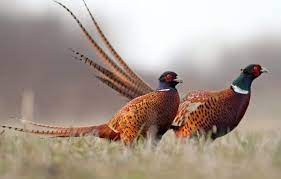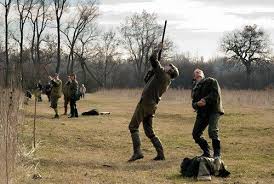
The recreational shooting of gamebirds is widespread and long established in lowland England. Over the past century there has been a marked shift in the species and origins of the gamebirds shot such that in the 21st century, the majority are made up of three species – pheasants, red-legged partridges and Mallard, that have most commonly been reared under artificial conditions before being released. Releasing has been undertaken since 1900, albeit originally at relatively few sites and in relatively small numbers, but the practice took off in the 1960’s when wild bird populations could no longer support shooting demand. It has been increasing ever since and it is currently estimated that between 39 and 57 million pheasants and 8.1 and 13 million partridges are released in the UK, with 85% of these in England.
Released gamebirds themselves have effects on the fauna and flora of the habitats into which they are released, and their release is accompanied by habitat and other management activities by shoot owners, game keepers or shoot members which also have a range of effects on habitats and wildlife. Once released, a proportion of the gamebirds are shot. The increasing numerical scale and spatial extent of releases and their associated management means that effects on the habitats and wildlife of England have stimulated a small but growing body of research.

Therefore, Defra has launched a three-week consultation (23 February) to determine details of the new interim licensing regime ahead of the 2021 release of gamebirds on and around protected sites in England. This consultation is necessary for DEFRA to regulate the release of non-native gamebirds, they have to do that as a result of a legal challenge mounted by the Wild Justice organisation and settled in court last October. Because of this legal action, DEFRA must take measures which will protect sites of nature conservation importance from the impacts of vast numbers of Pheasants and Red-legged Partridges released for recreational shooting.
The consultation will seek views on the introduction of a general licence for gamebird releases on Special Areas of Conservation (SACs) and Special Protection Areas (SPAs) and within a 500m buffer zone to minimise the negative impact this activity can have on these protected sites. What about Sites of Special Scientific Interest (SSSI)? The consultation sets out the proposed gamebird general licence scope and conditions and seeks views on their efficacy and practicality.
An interim licensing regime has been developed in response to a Defra commissioned review which considered the impacts of the release of the Common Pheasant and Red-Legged Partridge on and around SACs and SPAs and whether these could be managed better given the legal need to protect these sites from significant harm. Licencing is likely to only apply to shoots that release in the region of one thousand birds or mere per season.
Taken from Defra press release and ‘Ecological Consequences of Gamebird Releasing and Management on Lowland Shoots in England’ (NEER016), published by Natural England.
